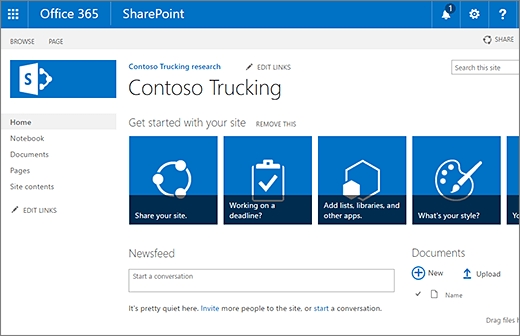Why Use SharePoint for Project Management (PM)?

*Cape not included. You’ll be the hero that made project management easy with SharePoint.
By using Microsoft SharePoint Online (part of Office 365 – which you likely already have), managing projects will be simple.
You can customize it based on your current approach to PM (such as Agile project management – APM).
Top 11 Reasons to Use SharePoint for Project Management
If implemented correctly, SharePoint’s project management features mean that:
- ✓ Stuff will actually get done.
- ✓ Central hub: One system will have everything.
- ✓ Dashboards and reporting keep stakeholders in the loop.
- ✓ Timelines and budgeting will be based on actual data (including from other systems). Project resource management and inventory tracking will be simple.
- ✓ Progress updates and deadlines will be clear. Milestones will automatically be recorded. Everyone will be on the same page.
- ✓ Task management, assignment scheduling, and accountability will be simplified.
- ✓ Documents will be organized. Finding the right file or template will be as simple as searching Google. Sync documents with Procore.
- ✓ Collaboration will be efficient (anytime, from anywhere, on desktop or mobile).
- ✓ Financials for the project will be easy to see. Check estimates versus actual expenses. Sort, aggregate, filter the data.
- ✓ Familiar interface: SharePoint intuitively ties into desktop, email, and calendar workflows in Microsoft Office.
- ✓ PMOs will love it: If your company has a project management office (PMO), they’ll become more efficient.
Let’s imagine what it’ll be like after SharePoint is properly implemented:
Employees love SharePoint much more than using a million different tools for one project.
Did we mention that you won’t need to be pestered by employee questions that you’ve already answered?
And your boss will be happy, because they’ll be able to quickly see progress in a real-time way, not relying on outdated reports from an export.
In fact, everyone will be looking at real-time data from the same place (in your SharePoint project management dashboard). SharePoint can even predict when your project will be finished.
Yep, it’ll make your job easier while saving the company money.
Here’s The Catch…

Implementing SharePoint for project management without a strategy is about as fun as running with a laptop on fire (which we don’t recommend).
Unfortunately, you only get those benefits if you properly implement SharePoint and integrate it with other company systems.
Out of the box, SharePoint isn’t configured to your organization or integrated into your other business systems.
Sure, you could try it on your own, but it’s not as easy to properly set up as you might think (or as Microsoft wants you to think). Many of your initial decisions have key implications that aren’t possible to change down the road (such as structure, theme, and naming conventions).
A lot of our customers come from businesses that are struggling (or completely stuck) with configuring SharePoint to meet their needs.
SharePoint can be tricky to set up in a way that works seamlessly for your specific organization.
Benefit from our experience. We’ve migrated over 200 companies to SharePoint and set up over 50 SharePoint project management systems.

Here’s what SharePoint looks like “out of the box”. You’ll have to do a lot of configuring to make it work for your business. Or, you could hire an expert (like HingePoint) to help.
DIY Beware:
If you go it alone, know ahead of time that you will need to build and customize the following. Plus, many of the initial choices you make when setting up SharePoint for project management are irreversible.
- Dashboards & widgets
- Folder structure/taxonomies/hierarchies
- Forms/fields
- Data lists/checklists/task lists
- Security & data governance policies
- User groups
- Reports, charts (Gantt charts and much more), and other tracking settings
- Project management workflows
- …and more.
In fact, SharePoint is going to fail as a project management system if you aren’t careful and strategic about how you set it up.
That’s where we come in. We can help.
